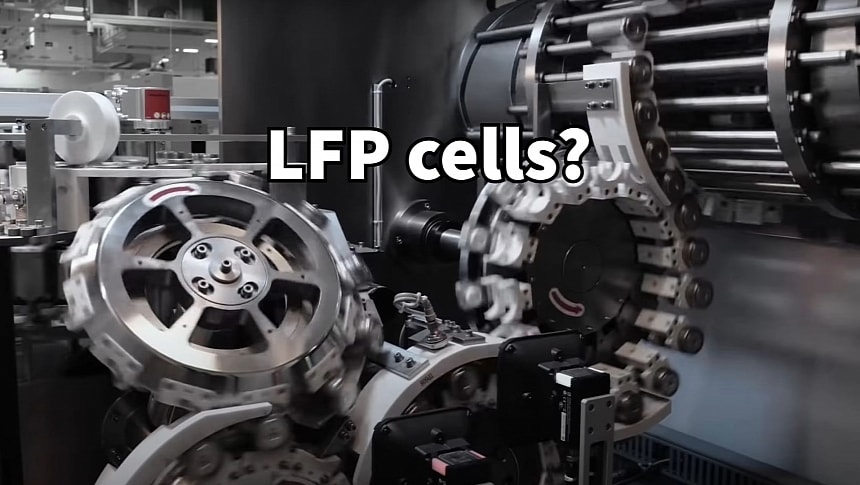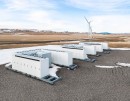Rumors indicate that Tesla might start in-house production of LFP cells in Nevada using equipment and technology from CATL. A new report about a lithium carbonate supply deal seems to confirm this theory. Lithium carbonate is used to produce LFP cells, as opposed to lithium hydroxide, which is preferred in nickel-based chemistries.
Tesla has been among the first Western carmakers to adopt lithium-iron-phosphate (LFP) cells for its entry-level models. LFP cells are much cheaper than nickel-based batteries but have lower energy density. This is why they are used in applications when price is more important than performance. LFP chemistry has constantly improved in the past years, with the best LFP cells being very close to high-nickel chemistries in terms of energy density and charging performance.
However, LFP cells have an important problem, which hampers wider adoption in the West. Since they have been developed and produced mostly by Chinese companies, they must be imported from China. Given the geopolitical conflicts, companies have tried to cut reliance on Chinese suppliers. American carmakers, including Ford and Tesla, have considered producing LFP cells in-house. This would allow them to access the federal incentives offered through the Inflation Reduction Act for battery cells produced in North America, amounting to $35/kWh.
Ford was the first to announce a partnership with CATL to establish local production in the US, although the move backfired. The Americans are uncomfortable with Chinese companies establishing manufacturing capabilities in the US. This is why Tesla tried to avoid a similar reaction by following a different strategy. Instead of partnering with a Chinese manufacturer, the EV maker would buy equipment and license LFP technology from a Chinese partner but keep the factory entirely to its own.
In February, a Bloomberg report revealed Tesla's plan to install excess equipment from CATL at a new facility in Sparks, Nevada. Tesla will have full control of the facility and cover 100% of the costs, avoiding the kind of scrutiny Ford faced when it announced a partnership with CATL to produce LFP cells in the US. The initial capacity will be small, at about 10 GWh per year, and the cells will be used in Megapack storage systems produced in Lathrop, California. Later, as it hones the process, Tesla will expand its capacity to supply LFP cells to its gigafactories for EV production.
A new report from China seems to support these rumors. Tesla reportedly signed a deal with Yahua Group for lithium carbonate. The report doesn't disclose the volumes or the value but says the contract covers 2025-2027. Tesla is Yahua's biggest customer, but until now, it has bought battery-grade lithium hydroxide, which is used to produce nickel-based cells. However, lithium carbonate is needed for LFP chemistries.
The contract suggests that Tesla is lining up the lithium supply for in-house LFP production. The time horizon also hints that Tesla is expected to start LFP cell production sometime next year. Having LFP cells made in the US would not only help with IRA incentives but also qualify the EVs for the EV tax credit. Currently, the Model 3 RWD produced with LFP cells is not eligible for the federal tax credit. In the case of the Model Y, Tesla ditched the LFP cells and is now using a software-capped NMC (nickel-manganese-cobalt) battery instead.
However, LFP cells have an important problem, which hampers wider adoption in the West. Since they have been developed and produced mostly by Chinese companies, they must be imported from China. Given the geopolitical conflicts, companies have tried to cut reliance on Chinese suppliers. American carmakers, including Ford and Tesla, have considered producing LFP cells in-house. This would allow them to access the federal incentives offered through the Inflation Reduction Act for battery cells produced in North America, amounting to $35/kWh.
Ford was the first to announce a partnership with CATL to establish local production in the US, although the move backfired. The Americans are uncomfortable with Chinese companies establishing manufacturing capabilities in the US. This is why Tesla tried to avoid a similar reaction by following a different strategy. Instead of partnering with a Chinese manufacturer, the EV maker would buy equipment and license LFP technology from a Chinese partner but keep the factory entirely to its own.
In February, a Bloomberg report revealed Tesla's plan to install excess equipment from CATL at a new facility in Sparks, Nevada. Tesla will have full control of the facility and cover 100% of the costs, avoiding the kind of scrutiny Ford faced when it announced a partnership with CATL to produce LFP cells in the US. The initial capacity will be small, at about 10 GWh per year, and the cells will be used in Megapack storage systems produced in Lathrop, California. Later, as it hones the process, Tesla will expand its capacity to supply LFP cells to its gigafactories for EV production.
A new report from China seems to support these rumors. Tesla reportedly signed a deal with Yahua Group for lithium carbonate. The report doesn't disclose the volumes or the value but says the contract covers 2025-2027. Tesla is Yahua's biggest customer, but until now, it has bought battery-grade lithium hydroxide, which is used to produce nickel-based cells. However, lithium carbonate is needed for LFP chemistries.
The contract suggests that Tesla is lining up the lithium supply for in-house LFP production. The time horizon also hints that Tesla is expected to start LFP cell production sometime next year. Having LFP cells made in the US would not only help with IRA incentives but also qualify the EVs for the EV tax credit. Currently, the Model 3 RWD produced with LFP cells is not eligible for the federal tax credit. In the case of the Model Y, Tesla ditched the LFP cells and is now using a software-capped NMC (nickel-manganese-cobalt) battery instead.
It looks like Tesla's lining up a supply of Lithium Carbonate, which is usually used for LFP chemistries.
— The Limiting Factor (@LimitingThe) June 19, 2024
That's as opposed to lithium hydroxide, which is used in high nickel chemistries.
If this is accurate, looks like Tesla could be lining up lithium for in-house LFP… https://t.co/Z5UY6kpL4x






